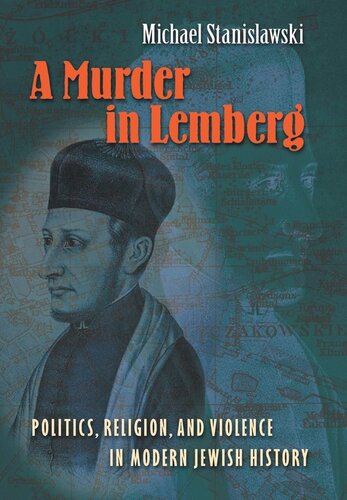

Most ebook files are in PDF format, so you can easily read them using various software such as Foxit Reader or directly on the Google Chrome browser.
Some ebook files are released by publishers in other formats such as .awz, .mobi, .epub, .fb2, etc. You may need to install specific software to read these formats on mobile/PC, such as Calibre.
Please read the tutorial at this link: https://ebookbell.com/faq
We offer FREE conversion to the popular formats you request; however, this may take some time. Therefore, right after payment, please email us, and we will try to provide the service as quickly as possible.
For some exceptional file formats or broken links (if any), please refrain from opening any disputes. Instead, email us first, and we will try to assist within a maximum of 6 hours.
EbookBell Team

4.4
52 reviewsHow could a Jew kill a Jew for religious and political reasons? Many people asked this question after an Orthodox Jew assassinated Israeli Prime Minister Itshak Rabin in 1995. But historian Michael Stanislawski couldn't forget it, and he decided to find out everything he could about an obscure and much earlier event that was uncannily similar to Rabin's murder: the 1848 killing--by an Orthodox Jew--of the Reform rabbi of Lemberg (now L'viv, Ukraine). Eventually, Stanislawski concluded that this was the first murder of a Jewish leader by a Jew since antiquity, a prelude to twentieth-century assassinations of Jews by Jews, and a turning point in Jewish history. Based on records unavailable for decades, A Murder in Lemberg is the first book about this fascinating case.
On September 6, 1848, Abraham Ber Pilpel entered the kitchen of Rabbi Abraham Kohn and his family and poured arsenic in the soup that was being prepared for their dinner. Within hours, the rabbi and his infant daughter were dead. Was Kohn's murder part of a conservative Jewish backlash to Jewish reform and liberalization in a year of European revolution? Or was he killed simply because he threatened taxes that enriched Lemberg's Orthodox leaders?
Vividly recreating the dramatic story of the murder, the trial that followed, and the political and religious fallout of both, Stanislawski tries to answer these questions and others. In the process, he reveals the surprising diversity of Jewish life in mid-nineteenth-century eastern Europe. Far from being uniformly Orthodox, as is often assumed, there was a struggle between Orthodox and Reform Jews that was so intense that it might have led to murder.